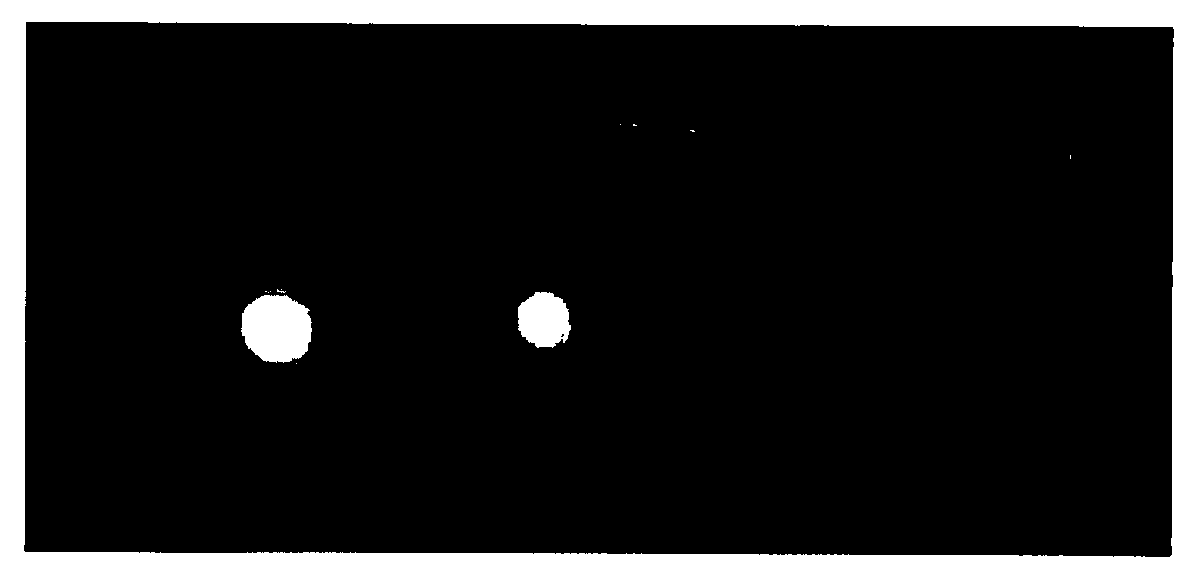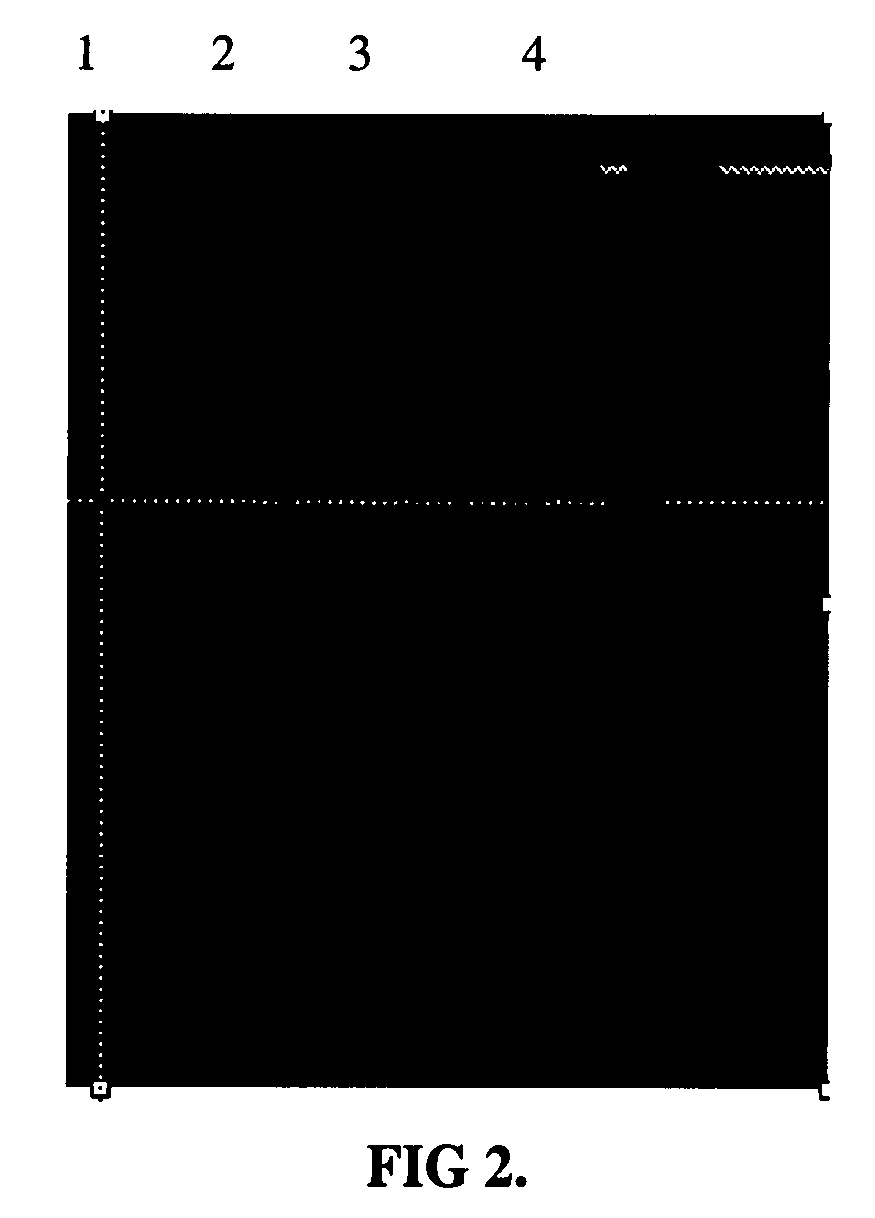Large stoke shift dye used for optical imaging
a technology of optical imaging and stoke shift, which is applied in the field of fluorescent dyes, can solve the problems of reducing the brightness that can be achieved per conjugate, destroying or reducing the quantum efficiency of the fluorescent dye, and affecting the detection accuracy of the conjugate, so as to improve enhance the stoke shift. , the effect of improving the brightness of the stoke shi
- Summary
- Abstract
- Description
- Claims
- Application Information
AI Technical Summary
Benefits of technology
Problems solved by technology
Method used
Image
Examples
example 1
Tricarbocyanine-Amine Functionalized Dye Labeled Antibody for Protein Assay
[0157]Conversion of Dye into N-Hydroxysuccinimide (NHS) Ester
[0158]To a solution of Compound 1 (120 mg) in dimethylformamide (DMF) (8 ml) was added N,N-disuccinimidyl carbonate (0.2 g), the resulting mixture was heated at 10° C. for half hour. The mixture was cooled to room temperature, ether was added, the solid product G (122 mg) was obtained. The product was pure based on its HPLC.
Covalent Attachment of Compound 1 to a Secondary Antibody
[0159]The dye N-hydroxysuccinimide (NHS) ester (0.05 mg) was added to a mixture of 0.5 mg of goat anti-rabbit secondary antibody in 200 ul of 0.15 molar phosphate buffered saline (PBS) and stirred for one hour at room temperature. The product was purified by size exclusion chromatography to yield the desired dye covalently bound to the antibody.
[0160]A small piece of nitrocellulose was spotted with target rabbit protein and allowed to stand for 15 minutes. The ...
example 2
Tricarbocyanine-Amine-Functionalized Dye Labeled Avidin for Detection of Biotin Labeled Protein
[0163]In another example, the N-hydroxysuccinimide (NHS) ester of compound 1 (0.15 mg) was mixed with Avidin (1 mg) in 1 ml of PBS buffer and allowed to react for 1 hr. The reaction was purified by centrifuge through a Centriprep filter with a 10,000 molecular weight cutoff and the covalently bound dye was measured by a fluorimeter to show maximum excitation at 635 nm and maximum emission at 751 nm with a Stoke shift of 116 nm. The tricarbocyanine-amine-functionalized dye labeled avidin was mixed with biotin-labeled-Bombesin and evaluated by polyacrylamide gel electrophoresis. The sample was imaged as before with a Kodak Image Station MM4000. As shown in FIG. 2, a control in the first lane 1 in which there was no biotin-labled-Bombesin and Lanes 2, 3, and 4 do contain biotin-labeled Bombesin complexed which formed a stable complex with the tricarbocyanine-amine-functionalized dye labeled a...
PUM
| Property | Measurement | Unit |
|---|---|---|
| max excitation wavelength | aaaaa | aaaaa |
| max excitation wavelength | aaaaa | aaaaa |
| emission wavelength | aaaaa | aaaaa |
Abstract
Description
Claims
Application Information
 Login to View More
Login to View More - R&D
- Intellectual Property
- Life Sciences
- Materials
- Tech Scout
- Unparalleled Data Quality
- Higher Quality Content
- 60% Fewer Hallucinations
Browse by: Latest US Patents, China's latest patents, Technical Efficacy Thesaurus, Application Domain, Technology Topic, Popular Technical Reports.
© 2025 PatSnap. All rights reserved.Legal|Privacy policy|Modern Slavery Act Transparency Statement|Sitemap|About US| Contact US: help@patsnap.com



